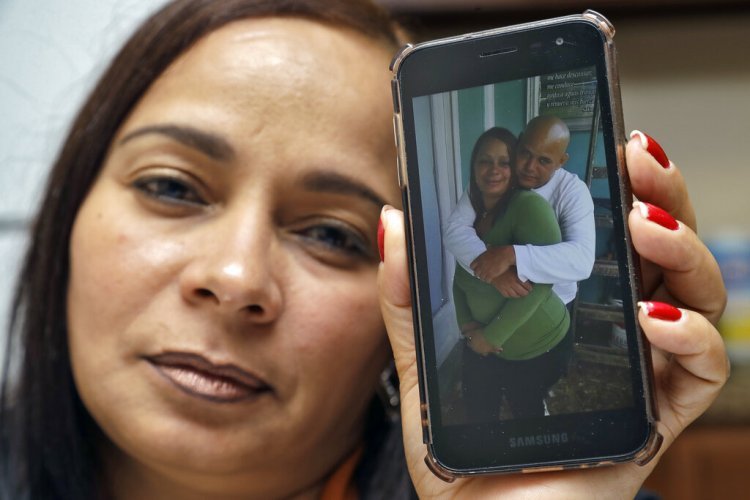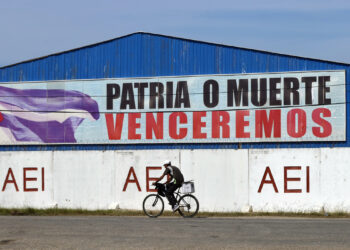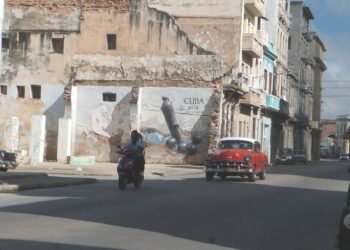Roylan Hernández Díaz’s long journey ended in a white-walled cell in a Louisiana prison’s solitary confinement wing. Near him were his last belongings: a tube of toothpaste, some disposable cups and a sheet of paper that explained how he could request his release from the immigration detention center. But he had already been denied his release three times.
The Cuban had been placed in isolation six days earlier because he said he would refuse to eat to protest his arrest. The guards put him there even after the medical staff referred him to mental health treatment three times and documented an bowel disorder that caused him unbearable pain.
For at least an hour before they discovered he had hanged himself, no one opened the door to check if he was alive.
His death could have been prevented. Last October, an Associated Press investigation into Hernández’s death found that there was negligence and apparent violations of government policies by the guards of the Immigration and Customs Enforcement (ICE) service, at a time when the detention of immigrants has reached record levels and new questions have arisen about the treatment that the U.S. government metes out to people seeking refuge.
Hallado muerto un cubano en una cárcel de inmigración en EEUU
ICE requires that immigrants detained in solitary confinement be observed visually every 30 minutes. Surveillance video shows a guard passing through Hernández’s cell twice in the hour before he was found and who wrote in the folder on the wall next to the cell door. However, he did not open the window of the cell door or try to look inside. The last person who through the window was an unidentified prison employee, 40 minutes before Hernández was found.
A person who works in the prison and who spoke with AP on condition of anonymity says they discovered later that Hernández could not be seen from the window.
Yarelis Gutiérrez Barrios was Hernández’s couple. She had been with him for three years while they traveled through South and Central America, always looking for ways to get to the United States. The man she met was strong, she says, determined to win his asylum application, not the kind of man who would easily give up.
“I think they let him die,” she says.
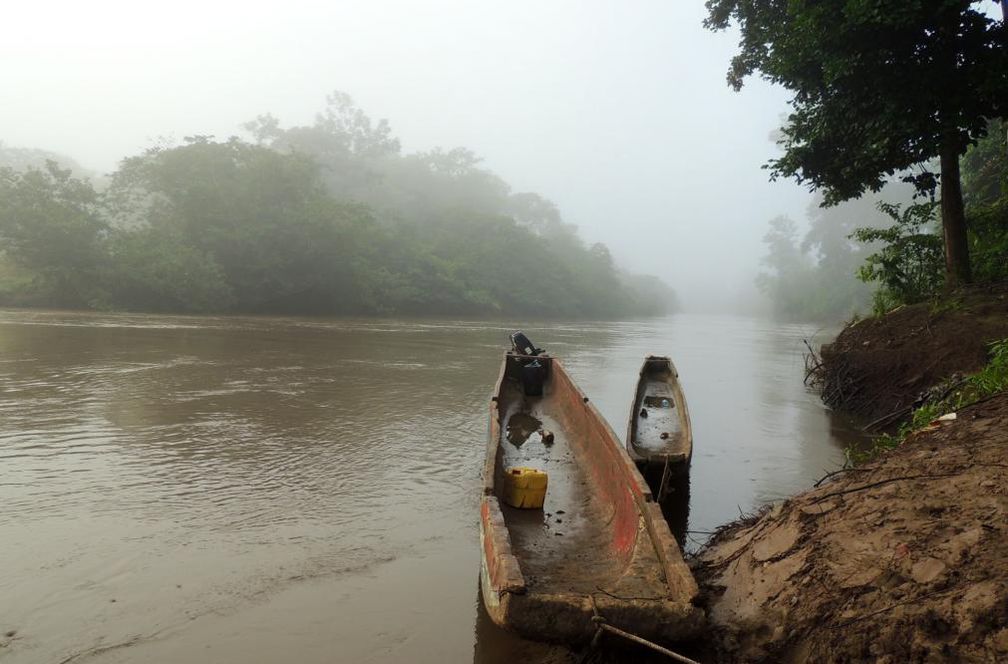
Hernández spent much of his 43 years rebelling against the Cuban government. He refused to do mandatory military service and protested against the Fidel Castro regime.
In 1994, when he was 18, he tried to escape with his father and brother in a boat, but they were captured and imprisoned.
Hernández was in prison for about two weeks. When he tried to flee again, in 2001, he was captured again and sentenced to nine years in prison. After his release, he was denied jobs and was harassed by the police.
In 2016, he left Cuba to go to Guyana because he could enter that country without a visa. From Guyana, he left for the United States.
Hernández and Gutiérrez met in Ecuador in 2016. They were among a group of Cubans camping outside the Mexican embassy in Quito, the capital of Ecuador, to demand visas that would allow them to reach the border between Mexico and the United States where they would request asylum. Mexico refused to grant visas and Ecuador mobilized to deport the protesters to Cuba.
Thus, they fled. In Argentina they sold juice in a cart and then traveled to Peru where they lived for a year.
Both in Argentina and Peru, Gutiérrez recalls, they struggled to make a living, although they were warned that it would be almost impossible for them to be allowed to establish themselves there permanently.
“In the end, we were going to come to the United States,” she said.
They crossed Ecuador and Colombia, and arrived at the Darien Gap, the jungle that connects South America with Central America. The region has no roads and no law, and is largely controlled by gangs that prey on the thousands of migrants who try to cross it each year.
The couple walked several days in the light and dark before reaching a town in Panama. Finally, they turned themselves in to the authorities at a border post.
But in the jungle, Gutiérrez says, Roylan lost the documents he had brought with him from Cuba documenting his imprisonment and his political problems, papers that would have been key to proving his asylum case in the United States.
They were detained for 10 days in Panama, and then transferred to a border town in Costa Rica. One by one, they boarded buses and crossed checkpoints in each country during the journey through Nicaragua, Honduras, Guatemala and Mexico. There, they spent several days in detention.
After five months, on May 18, 2019, they arrived at the border bridge between Juarez, Mexico, and El Paso, Texas. They waited to be allowed in.
After two months, Hernández applied for asylum and was arrested.
Initially, he and Gutiérrez were taken to the same detention center near the bridge. Men and women were separated and taken to small and cold cells.
She last saw him from the other side of the dining room a few days after they crossed. It was suppertime, but they were not allowed to talk to each other.
Gutiérrez was eventually released, but a facility official told her that Hernández had been taken to a detention center in Mississippi.
After a few weeks, he would be transferred to Louisiana, a state that for thousands of immigrants has become synonymous with prolonged detention. He remained incarcerated, although a preliminary investigation determined that his asylum application was credible.

In the last days of his administration, President Barack Obama revoked the policy known as “dry foot/wet foot,” which offered thousands of Cubans a path to permanent residence in the United States and, eventually, citizenship.
Under the government of President Donald Trump, the United States restricted the reasons why people can apply for asylum and has pressured immigration court judges to process and reject applications more quickly. He has also arrested thousands of asylum seekers who previously would have been allowed to live and work in the United States while their cases were pending.
Those policy changes occurred after Hernández left Cuba, but they took shape in the last months of his life.
On June 13, Hernández arrived at the Richwood Correctional Center. Located in Monroe, in the northeast part of the state, Richwood is one of at least six Louisiana prisons that became immigration detention centers during the Trump administration.
In order to fill prisons, empty because of the criminal justice reform, in rural communities in Louisiana prisons were filled with asylum seekers and other immigrants. There was a time last year when Louisiana had about 8,000 migrants detained, only surpassed by Texas, more than 2,000 at the end of the Obama administration.
Louisiana has also become famous for the wide range of probation rejections for migrants, particularly large populations of Cubans, Venezuelans, and people from South Asia. In September, a federal judge ruled that the ICE office in New Orleans violated the agency’s own guidelines by not giving each migrant a decision, case by case, on whether they could be released.
Little changed immediately after that decision, although there have been some improvements. According to the American Civil Liberties Union (ACLU), of 345 applications received between October 17 and December 10, only four were granted. ICE granted parole to about 20% of asylum seekers in January and February, the Louisiana ACLU said, citing data that ICE has provided in the federal lawsuit.
ICE spokesman Bryan Cox declined to comment on probation practices in the state, but said “any suggestion that the majority of people arrested by ICE are detained is false.”
The detainees at Richwood and other detention centers have repeatedly protested.
In a Louisiana jail, men from South Asia organized a hunger strike that has lasted 100 days and continues. In another, officials used pepper spray on immigrants who staged a protest to demand freedom.
Last year, a Richwood inmate wrote in a letter released by the advocacy group Freedom For Immigrants: “We just want our freedom to pursue our cases and leave this hell, because Louisiana is a graveyard for live men.”
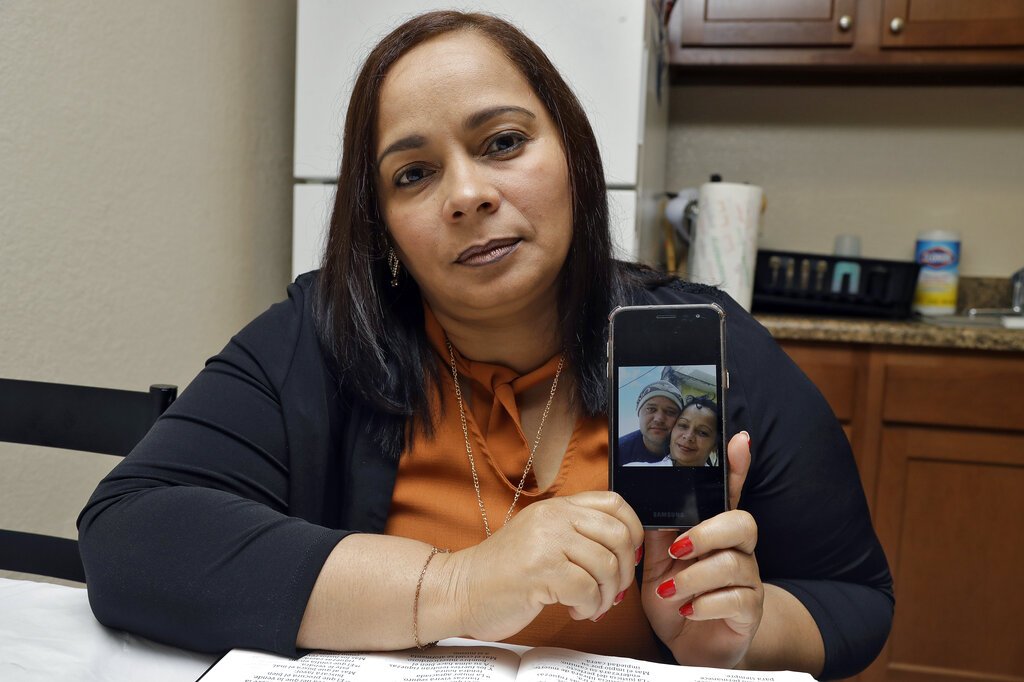
By phone from Havana, a man who was detained in Richwood recalls once seeing Hernández standing in the yard.
Hernández was doubled over in pain with his hands on his stomach. He was pale. He had accidentally eaten something that had sugar and that made his condition worse.
According to Dariel Hevia León, then arrested and now deported, Hernández constantly complained about the pain and felt that the medical staff did not treat him properly.
“He told me, ‘The prison is killing me,’” Hevia said.
According to an ICE report compiled after his death, medical staff checked Hernández when he arrived and confirmed that he had irritable bowel syndrome.
Yarelis Gutiérrez says that he had been diagnosed with intestinal problems in Peru and that he needed medical help in Panama and Mexico during his trip.
People with irritable bowel syndrome can control their pain with medication and diet. The syndrome has also been associated with anxiety and depression.
When Hernández arrived in Richwood, he rejected a mental health referral, says the ICE report. Twice he was referred to mental health treatments, in August and September, although the report does not say why. It says he refused both times.
Hernández told Gutiérrez, his couple, and other detainees in Richwood, that he would fight his case in immigration court until the end. But according to what Hernández commented to others later, he faced a huge and perhaps insurmountable challenge: the loss in the jungle of a great deal of the papers that documented his case.
He went from Richwood to his first appearance in immigration court, and spoke with a judge in New York by video.
The Executive Office of Immigration Review declined to disclose its recording of that hearing. According to his couple, the judge told him that he needed some evidence to prove his case. So Gutiérrez began calling people in Cuba, and Cubans who had left the island, to ask them to write letters to support his claim that he was harassed in the country.
“I barely got him three letters, because it took me a long time to get them since people in Cuba are afraid to speak,” she said. “They’re afraid to get involved in problems of this magnitude, but I got them.”
On October 9 he had what would be his last court hearing. According to a recording, the judge told Hernández that his final hearing would be scheduled for January 30, more than three months away. Hernández responds and says he does not understand.
“My case is my case. I have already sent my evidence,” Hernández says, according to a translator heard on the recording. “I’ve been detained here. My rights have been violated. I have no benefit. I have already sent three letters and my wife is out on the street.”
The judge repeated that his final hearing was on January 30 and said he could have a lawyer present if he wanted. While the translator explains this to Hernández, the judge says: “Have a good day.” The recording ends.
According to Gutiérrez, Hernández called her later to tell her that he was going to organize another hunger strike.
“I said ‘don’t do it’ because I was afraid for her health, that he wouldn’t to bear it,” she says. “He was mad at me. He told me: ‘I’m going to do it. Support me because it’s the only way I have to get out of here.’ In his mind, that was the only way.”
The next day, October 10, the ICE report says he had a medical evaluation before being taken to isolation for threatening a hunger strike. A nurse found that his physical and mental health was normal, “except for a withdrawn emotional state.”

The inside of the cell where Hernández was being held when he died had no video surveillance, according to the Ouachita County Sheriff’s Office, the local public order agency called to investigate shortly after he was found dead.
But the Sheriff’s Office obtained a video of the corridor outside his cell that captured the last hour before they found his body. This is what it shows:
–1: 19 p.m.: a guard walks to Hernández’s door. Takes a folder from the wall by the door, writes in it and returns the folder to the wall. He never looks through the window of Hernández’s cell door.
–1: 26: a man in civilian clothes goes through the cell, stops to open the window on the cell door and looks inside. The Sheriff’s Office says the man was a prison employee, but does not have his name on file.
–1: 54: The guard returns. Once again, he takes the folder, writes in it, and puts it in its place without looking inside the cell.
–2: 04: Three staff members and who seems to be a prison administrator pass in front of the cell and fill almost the entire hallway. A prison captain surrounds the small crowd and walks by the wall and door of Hernández’s cell. The captain, identified by the Sheriff’s Office as Gerald Hardwell, later told investigators that he had noticed a “strong smell” coming from the cell.
Hardwell stops and lifts the cover of the window of Hernández’s door, as the man in civilian clothes had done. He starts knocking on the door with his left hand. He later told the Sheriff’s Office that he could not see Hernández.
A minute later, he returns with a set of keys. He uses his left hand to lift the cover of the window on the door, uses his right hand to open the lock, and pushes open the door.
Hardwell pokes his head into the cell and runs away from the cell, and covers his mouth with his left hand.
He had discovered that Hernández had hung himself with a sheet tied to the pole of his bunkbed.

The Ouachita County coroner recorded the time of his death at 2:15 p.m., “10 minutes after he was apparently dead to Hardwell and others in the prison,” and said he was last seen at 1:50 p.m., Assistant Medical Examiner Joy Davis told AP. The video shows that medical staff remained outside his cell long after he was discovered, and that his body was not removed from the cell until almost 4 p.m.
The photos taken of his body show that Hernández could have been dead several hours before he was found, based on how blood had accumulated in his hands, according to an analysis conducted at the request of AP by Dr. Nizam Peerwani, the coroner in Fort Worth, Texas, and forensic expert of the Physicians for Human Rights advocacy group.
Peerwani discovered that the prison did not notice several warning signs that indicated that Hernández deserved more attention: a well-documented history of intestinal problems, his repeated refusal to receive mental health treatment and his hunger strikes. Peerwani says that Hernández’s death is not due to “the commission of an act of violence perpetrated against him, but to the omission.”
The question remains whether it was necessary for him to remain in isolation. According to the ICE Health Services Corps guidelines, in the first 72 hours of being isolated for threatening a hunger strike, a health care provider should have checked if Hernández could be kept there. That 72-hour review must have occurred no later than October 13.
There is no reference to any review in the ICE detainees’ death report. The ICE report says that on the day of his death and the previous four days, a nurse observed that Hernández appeared normal and was not distressed.
And under national detention standards based on ICE performance, anyone in isolation should be monitored at least every 30 minutes.
The video shown by the sheriff only includes the time before Hernández was found dead, so it is impossible to determine how many times he was observed.
The prison employee who spoke with AP on condition of anonymity says that Hernández hung himself in a corner of the cell that could not be seen through the window on the door. The same employee said it was common knowledge that guards falsely recorded the reviews they were supposed to perform.
ICE and LaSalle Corrections, the private company that administers the prison center, refused to report if the guard who appeared outside Hernández’s cell was fired or if any other employee was held liable.
ICE and LaSalle did not answer most of the questions for this investigation.
Scott Sutterfield, LaSalle development executive, declined to answer any questions “due to pending litigation.” Sutterfield joined LaSalle last year after working as interim director of the local ICE office for execution and removal in New Orleans; he denied one of Hernández’s requests to be released.
“I can say that LaSalle Corrections is firmly committed to the health and well-being of all those who are in our custody,” Sutterfield said.
“We can’t speak for an agency contractor,” Cox, the ICE spokesman, said in an email. He added that ICE “forces its staff, including contractors, to maintain the highest standards of professional and ethical behavior.
“Also, while any death in custody is unfortunate, ICE deaths in custody are extremely rare and occur at a rate around 100 times lower than the national average for people in federal and state custody across the country,” said Cox.
Eight persons have died in ICE custody since October, when the fiscal year began, one less than the eight who died during the previous year. In Richwood, a Guatemalan man tried to commit suicide in December while detained in isolation, months after Hernández’s death.
Lorena Perez-McGill, the man’s lawyer, says she had seen him earlier that day and told the local mayor that he could harm himself. The guards managed to prevent him from slashing his wrist five minutes after he had started.
The guards took him to a local hospital where he was given stitches. Later, Perez-McGill says, he was returned to the same segregation cell.
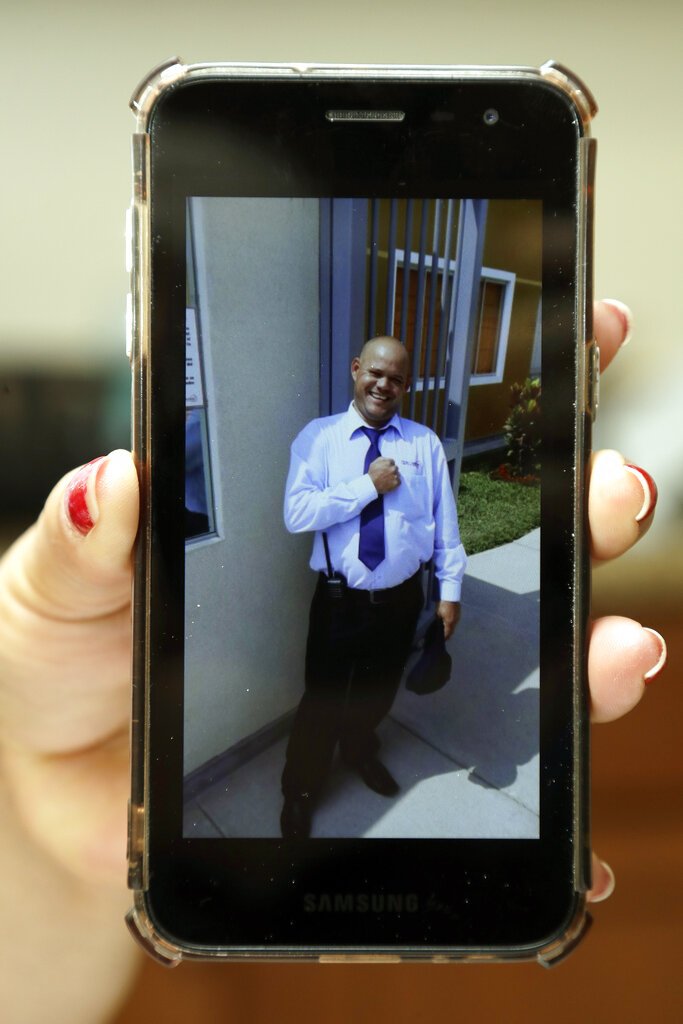
In addition to Yarelis Gutiérrez, Hernández left two daughters and one son, as well as his mother and father. The last time he left home, his family knew he hoped to reach the United States to earn money and support them. Now, they have many questions about his death: how could someone with such strong convictions take his life? What happened to him while he was in prison and why?
“He had struggled to get to this country because he loved this country, he loved it with all his life,” said Gutiérrez. “He gave his life for this country.”

